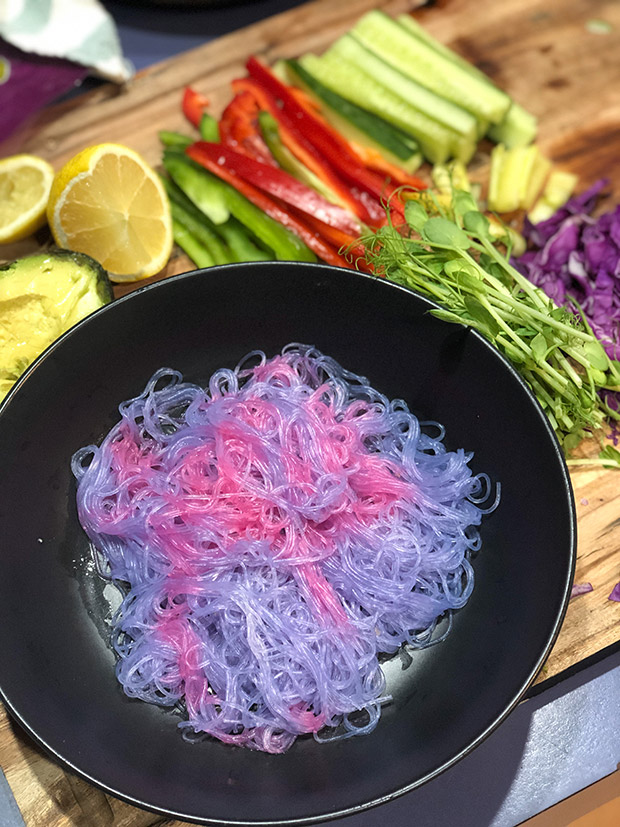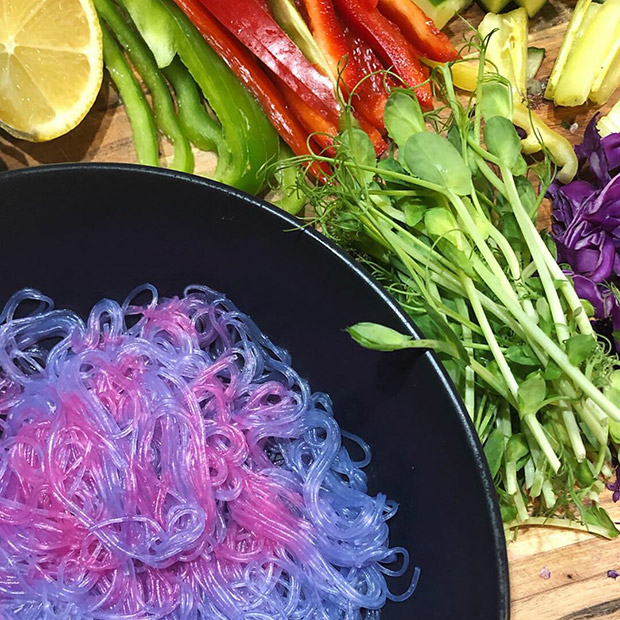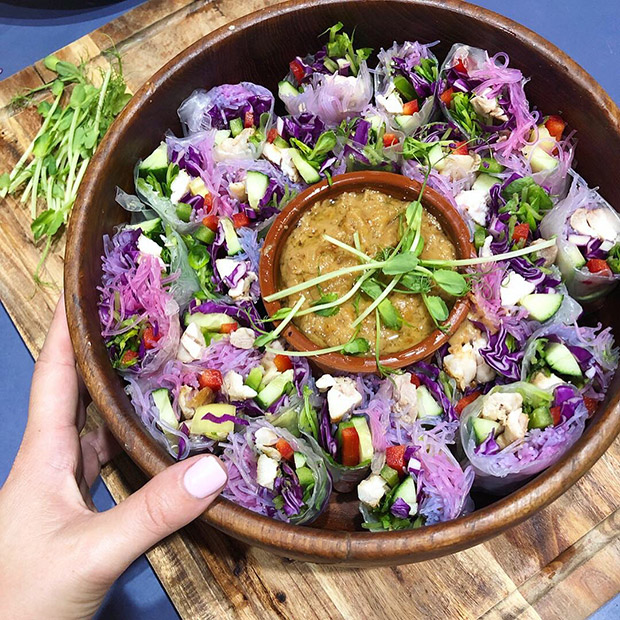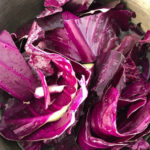Kid-Friendly Recipe: Unicorn Noodles (with natural colouring)

Colourful cabbage leaves and a squeeze of lemon can take Asian dishes (such as salad rolls or stir fry) to a magical level.
Recipe and words: Sustainable Holly
Unicorn noodles are so easy to make and completely magical to watch the colours change from purple to pink. My kind of chemistry lesson! They are made using all-natural colouring and would be perfect for kids in the kitchen. With the current restrictions in place, there may be many parents looking for more creative and healthy ways to entertain their kids.
INGREDIENTS
4-5 red/purple cabbage leaves
100g vermicelli noodles
2 cups water
1/2 lemon
METHOD
Roughly chop the red cabbage. Use the outer leaves with a deeper colour. Add water and cabbage to a pot and bring to the boil. Let it simmer for 5-10 mins bruising the cabbage with a wooden spoon. Remove the cabbage and discard (compost).
Add the noodles to the purple water and turn over until they spread out in the pot and are fully submerged in liquid. Turn the heat off and cover the pot for 10-15 minutes until the noodles have absorbed all the liquid. Stir the noodles and strain off the excess liquid if there is any.
Place your noodles in a bowl and before serving roughly squeeze the lemon over the purple noodles and the acidity will change the colour to pink.

NOTES
The more cabbage leaves you use the deeper the colour will be. The key is to get the noodles to absorb all the liquid so don’t add too much water at the start. Try using the noodles to make rice paper rolls or serve as a side dish to a Thai Curry.

ABOUT THE AUTHOR

Sustainable Holly is a Kiwi who is currently living in Perth, Australia and on a journey to create a more sustainable lifestyle. She grew up on a coastal farm in Northland, New Zealand and her parents have always been nearly self-sufficient. She currently lives in a suburban house in Perth, Australia which she has been converting more and more space into edible urban permaculture gardens.




